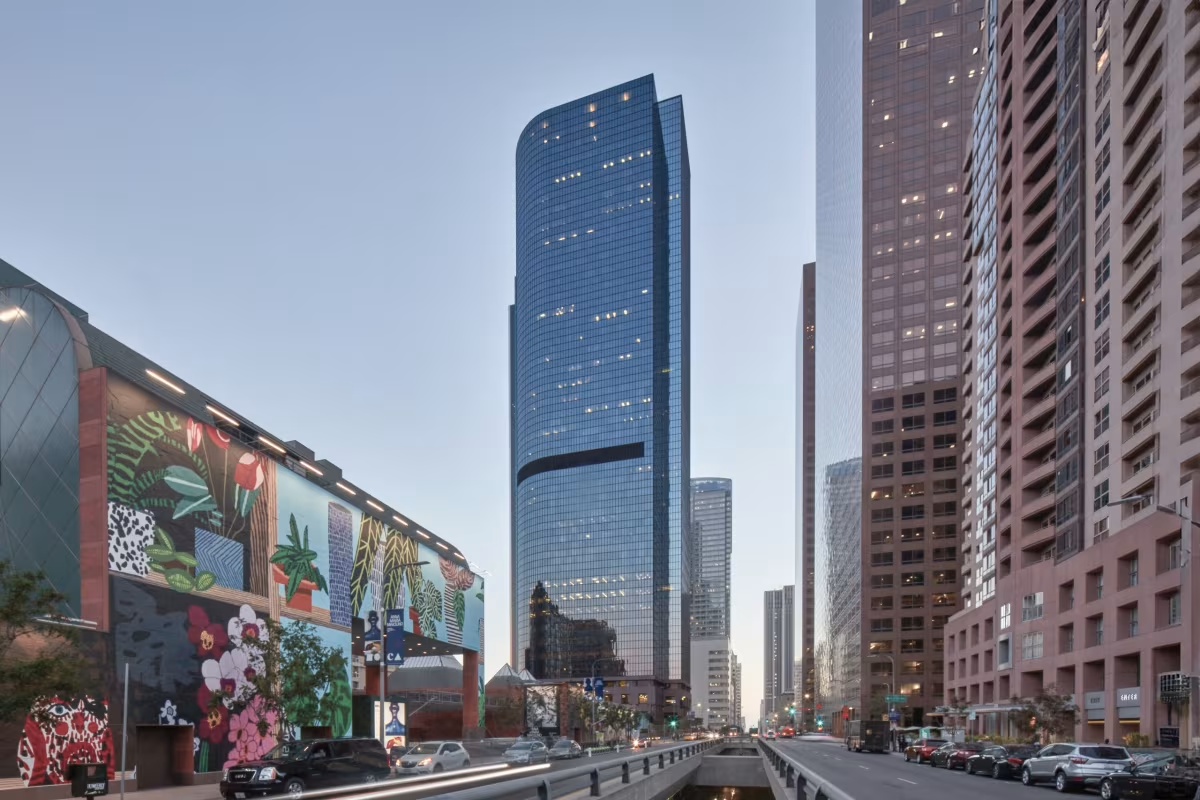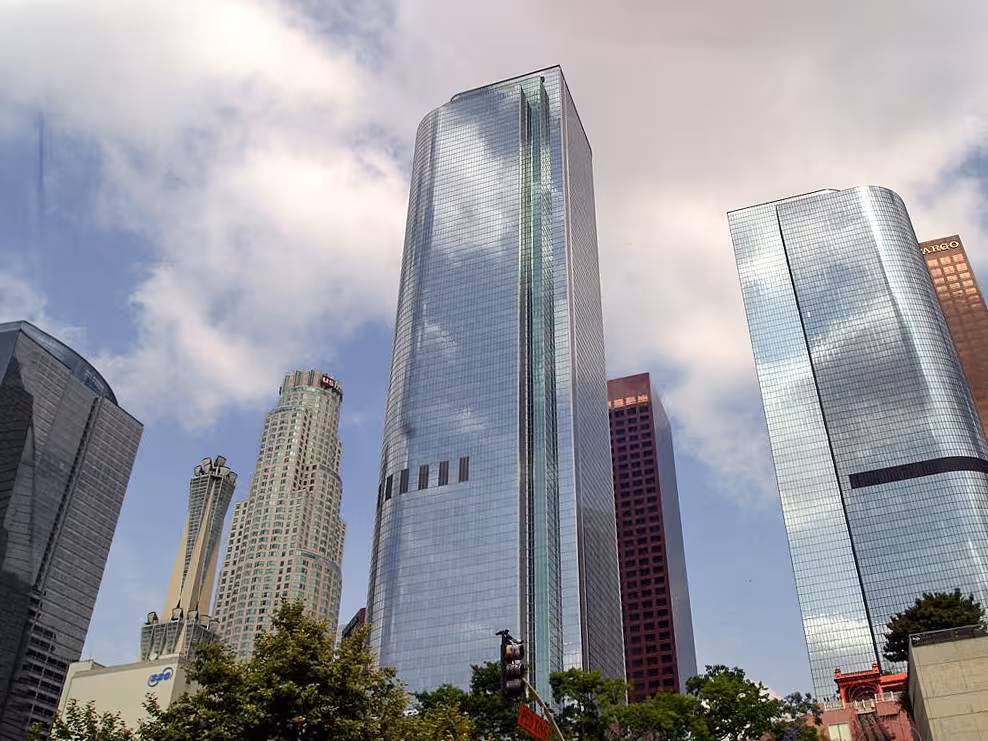One California Plaza vs Two California Plaza


Comparing the One California Plaza and the Two California Plaza is interesting because they both rise in Los Angeles, CA, yet they were conceived by two different design teams, Arthur Erickson Architects and Artur Erickson Architects, and were completed at different points in time. They were finished more than 7 years apart.
This contrast within the same city allows us to see how different creative minds interpreted the evolving needs of Los Angeles across time.
Let's take a closer look!
Height & Size
The Two California Plaza is clearly the larger tower of the two, both in terms of height and number of floors. It rises to 751ft (229m) with 52 floors above ground, while the One California Plaza reaches 577ft (176m) with 42 floors above ground.
Two California Plaza also offers more total built-up area, a total fo 1,329,794 sqf (123,542m2), which is about 279,797 sqf (25,994m2) more than what the One California Plaza offers.
Of course, each project may have faced different briefs or regulatory constraints, which we don't really know about and could also explain the outcome.
Architectural Style
Both the One California Plaza and the Two California Plaza were designed in line with the aesthetic conventions of the Modern style.
Both buildings were completed when the Modern style was already past its peak. This makes them feel like late echoes of the movement, more reflective of continuity or nostalgia than of cutting-edge design at the time.
Uses
Both the One California Plaza and the Two California Plaza were designed to serve as commercial towers, and that has remained their main use since their completion, serving similar roles in the urban fabric.
Both towers provide significant parking capacity, with One California Plaza offering 1313 spaces and the Two California Plaza offering 493.
Structure & Facade
Both the One California Plaza and the Two California Plaza rely on a Frame structural system.
A frame structure uses a grid of columns and beams to carry the building's loads. This frees the walls from structural duties, allowing for flexible floor plans and larger windows.
They also employ the same type of facade, a Curtain Wall facade.
A curtain wall is a non-load-bearing facade hung from the structural frame. It is anchored to floor slabs and transfers only its own weight and wind loads, allowing for sleek, glassy exteriors.
| One California Plaza | Two California Plaza | |
|---|---|---|
| Arthur Erickson Architects | Architect | Artur Erickson Architects |
| 1983 | Construction Started | 1990 |
| 1985 | Year Completed | 1992 |
| Modern | Architectural Style | Modern |
| Commercial | Current Use | Commercial |
| 42 | Floors Above Ground | 52 |
| 5 | Floors Below Ground | 6 |
| 176 m | Height (m) | 229 m |
| 97548 | Built-up Area (m²) | 123542 |
| 22 | Number of Elevators | 26 |
| Frame | Structure Type | Frame |
| Steel | Vertical Structure Material | Steel |
| Concrete And Steel | Horizontal Structure Material | Concrete |
| No | Facade Structural? | No |
| Aluminum, Glass | Main Facade Material | Glass, Aluminum |
| The Beck Group | Main Contractor | Hathaway Dinwiddie Construction Company |
| Bunker Hill Associates | Developer | Metropolitan Structures West |
| Martin & Huang International Inc. | Structural Engineer | Martin & Huang International Inc. |
| CA | State | CA |
| Los Angeles | City | Los Angeles |
| 300 South Grand Avenue | Address | 350 Grand Avenue |